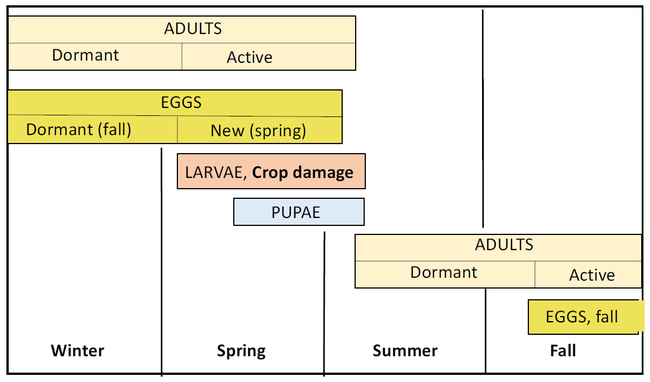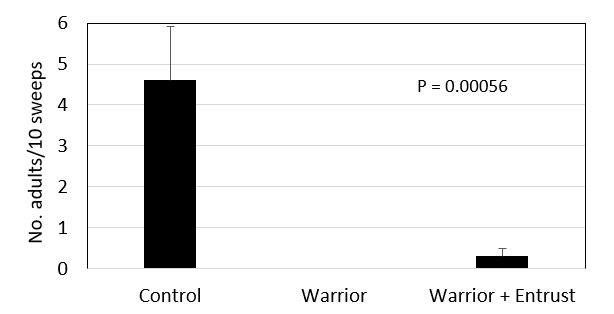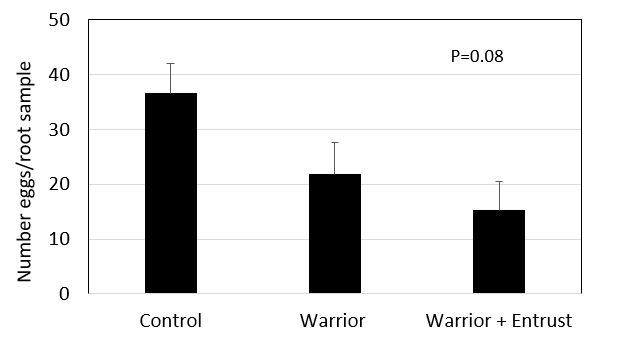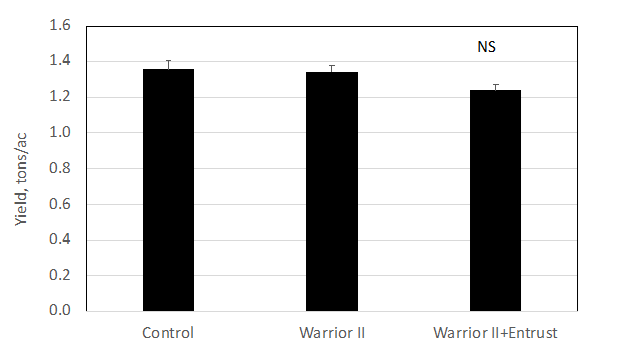I have received a couple calls this year from growers and a PCA about root scarring in alfalfa fields. These observations were a bit of a “head scratcher” for all of us. At one of the fields, I noticed what looked to be a wireworm on the root, so that was throwing me off (Figure 1). Cutworms can also feed on plant roots. The larger instars have been found below the crowns under plant debris, but we didn't find any at this site. I reached out to Farm Advisor Rachael Long to get her thoughts. I had once heard Rachael talk about clover root curculio, and I wondered if it was causing the problem. While we have not confirmed that clover root curculio is present and causing damage in San Joaquin County alfalfa fields, it can occasionally be found in the Central Valley. It is, however, generally found in low numbers because it favors cooler climates. The purpose of this article is to bring awareness for this pest and to summarize some research that Rachael did in collaboration with Rob Wilson, Ian Grettenberger, and graduate student Jasmin Ramirez Bonilla.
Clover root curculio is a pest of alfalfa, clovers, and other legumes throughout the United States, often in cool climates. We are not clear on the distribution of it in California, but it has been observed in the Intermountain Region. The larvae are white and feed on the roots, in contrast to the green larvae of the alfalfa weevil that feed on leaves. The adults are mottled gray-brown and lack a pattern on their backs. Their damage is usually observed as patches of poor growth or stand decline because the larvae gouge, even girdle, the taproots (Figure 2). The gouges can serve as a point of entry for diseases.
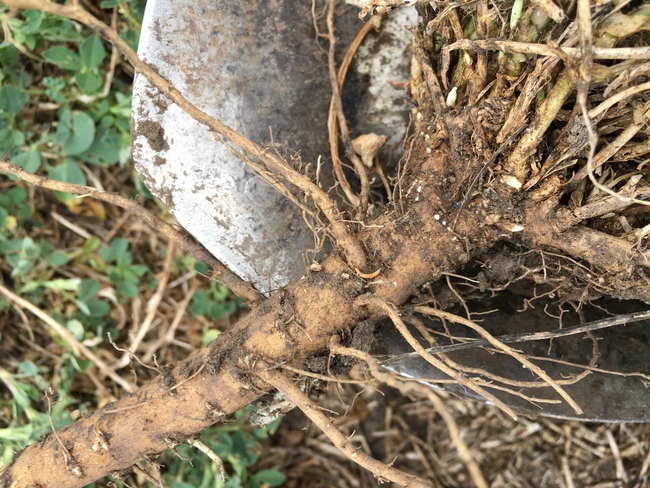
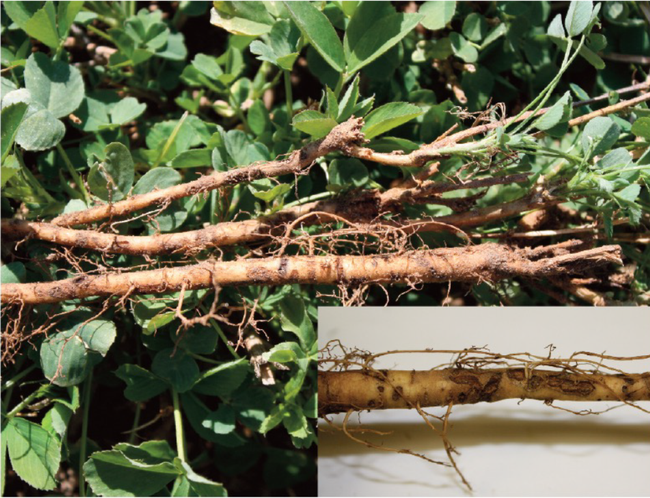
The life cycle of the clover root curculio is shown in Figure 3. There is one generation per year. Adult weevils may be observed in just about every season, and the larvae are present during the spring. The larvae can be difficult to find, however, because they are in the soil and often may be inside the root nodules during early instars.
Unfortunately, management practices are limited. Cultural practices include rotating out of alfalfa and other legumes for at least one year, avoiding planting alfalfa next to infested fields (since seedling roots are weaker and would be more susceptible to feeding damage), good irrigation practices and nutrition to reduce plant stress that might make stands more susceptible to decline, and cleaning equipment when moving between fields.
There are no insecticides registered for clover root curculio larvae, and our understanding of how to control adults is limited. In the Klamath Basin research, spring-applied insecticide trials did not have efficacy because adults lay eggs from spring to summer and can escape the treatment, and eggs overwinter in the soil. Fall treatments were also evaluated, after adults had migrated back into the field. Warrior and Warrior plus Entrust were effective at reducing the adult population compared to an untreated control, and reduced the number of eggs the following spring. Insecticide treatments might not be economical, however, because there was no yield benefit the following year. So overall, this pest remains a “head scratcher”.
